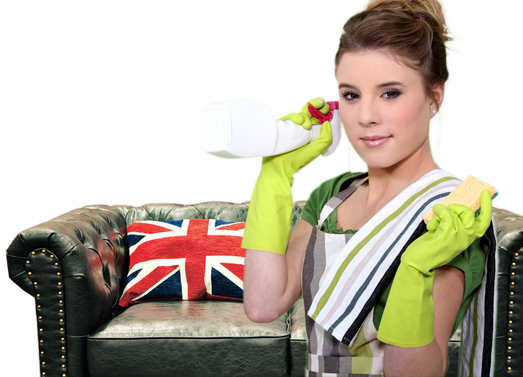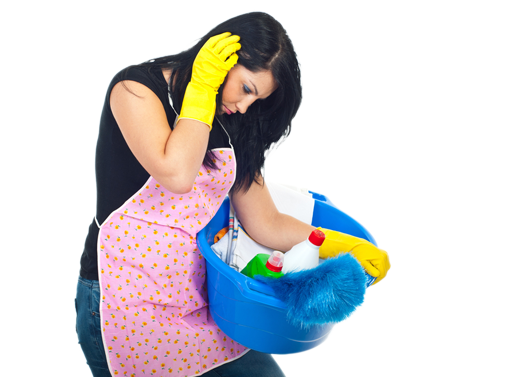Mastering the Art of Curtain Cleaning
Posted on 21/05/2025
Mastering the Art of Curtain Cleaning: The Complete Guide
Does your living space feel dull despite your best efforts at cleaning? Have you ever wondered if your curtains could be the culprit? Curtains do far more than merely block out sunlight or provide privacy--they are an integral part of your home's ambiance. Yet, they are often overlooked when it comes to cleaning. Mastering the art of curtain cleaning can elevate the look and feel of your interiors, protect your family's health, and even help preserve your drapery investments.

Why Curtain Cleaning Is Essential
Many homeowners underestimate how much dust, dirt, and allergens accumulate on curtains. Over time, uncleaned curtains can:
- Cause indoor air quality problems
- Trigger allergies or asthma in sensitive individuals
- Harbor bacteria, mold, and pet dander
- Fade in color and degrade the fabric
- Develop unpleasant odors
Regular curtain cleaning not only promotes a healthier home environment but also safeguards the beauty and longevity of your drapery. This article explores everything you need to master the art of cleaning curtains, from daily habits to deep cleaning techniques.
Understanding Different Curtain Fabrics
The first step in effective curtain care is to know your curtain fabric. Each type has specific maintenance requirements:
- Cotton Curtains: Easy to clean, often machine washable.
- Velvet or Suede: Require professional cleaning methods and gentle handling.
- Linen: May shrink with water; dry cleaning is usually preferable.
- Silk: Delicate; spot cleaning or expert cleaning is recommended.
- Synthetic Fabrics (Polyester, Nylon): Durable and often low-maintenance.
Always check the manufacturer's label for specific washing instructions before you begin any type of curtain cleaning.
How Often Should Curtains Be Cleaned?
Frequency matters: Most experts recommend the following schedule:
- Weekly: Dust and vacuum to prevent buildup.
- Every 3-6 months: Wash or dry-clean, depending on fabric type.
- Seasonally: Deep clean for homes in dusty environments, with pets, or with allergy sufferers.
Sticking to a cleaning routine ensures that dust and allergens do not have a chance to settle in your drapery.
Preparing Curtains for Cleaning
Step 1: Take Down the Curtains Safely
- Remove hooks, rings, or any curtain accessories.
- Shake out the curtains outdoors to dislodge loose dust and pet hair.
Step 2: Check for Stains or Damage
- Address any stains with a spot treatment suitable for the fabric.
- Repair any loose hems or minor tears.
Daily and Weekly Curtain Maintenance
Mastering the cleaning of curtains starts with simple habits:
- Vacuum with a soft brush attachment to gently remove surface dust and lint.
- Shake or fluff curtains outdoors at least once a week.
- Spot clean stains promptly using a mild detergent and soft cloth.
- Rotate curtains and blinds regularly to prevent uneven fading and dust buildup.
These routine tasks will help keep your curtains fresh and extend the time between deep cleans.
Deep Curtain Cleaning Methods
1. Machine Washing Curtains
For machine-washable curtains:
- Check the care label for washing instructions and temperature settings.
- Remove all hardware and shake out any debris.
- Wash on a gentle cycle with cold or lukewarm water.
- Use a mild, fabric-friendly detergent.
- Air dry whenever possible to prevent shrinkage and preserve shape.
2. Hand Washing Delicate Curtains
- Fill a bathtub or large basin with cool water and gentle soap.
- Gently agitate the curtain fabric and allow to soak for 15-30 minutes.
- Rinse thoroughly and squeeze out excess water (never wring delicate materials).
- Hang to air dry to avoid distortion of the fabric.
3. Steam Cleaning Curtains
- Steam cleaning is perfect for refreshing heavy drapes like velvet, or for in-between washes.
- Use a handheld fabric steamer to pass steam along the fabric from top to bottom.
- This technique sanitizes and refreshes without removing the curtains from their rods.
4. Professional Curtain Cleaning Services
- For specialty fabrics (silk, wool, or heavily embellished curtains), always seek professional cleaners.
- Dry cleaning is recommended for most lined or interlined curtains.
- Many services offer in-home curtain cleaning, minimizing disruption to your home.
How to Remove Stubborn Stains and Odors
Stain Removal Tips
- Act fast. The sooner you address a stain, the better.
- Blot, don't rub, with a clean, damp cloth to lift the stain.
- Use a mixture of vinegar and water or a fabric-specific stain remover for tougher spots.
- Repeat the process as needed, rinsing thoroughly after each treatment.
Eliminating Odors from Curtains
- Hang curtains outside on a breezy, dry day to air them out.
- Spray lightly with a fabric-safe deodorizer.
- For persistent smells, wash or steam clean the curtains as described above.
How to Dry Curtains Properly
Curtain care doesn't stop after washing. Drying them correctly is key to maintaining their shape and appeal:
- Air dry hanging curtains on a clothesline or over a shower rod.
- Use a low heat setting on the dryer only if permitted by the manufacturer.
- Straighten hems and seams while damp to reduce wrinkling.
- Replace curtains on the rod slightly damp to allow creases to fall out naturally.
Pro Tips for Curtain Longevity
- Line curtains with a protective backing to reduce sun damage.
- Rotate window coverings in rooms with heavy sunlight.
- Clean windows and sills regularly to minimize dust transfer to curtains.
- Store seasonal curtains loosely folded in a breathable bag to avoid mustiness.
Maintaining Curtain Hardware
Don't neglect the curtain rods, hooks, and finials during your cleaning routine. Wipe these down with a damp cloth and check for rust or tarnish. Cleaning hardware alongside your curtains ensures a complete makeover for your window treatments.
Curtain Cleaning Myths Debunked
- Myth: Curtains only need cleaning when visibly dirty.
Fact: Invisible dust, pollen, and bacteria accumulate rapidly. - Myth: All curtains can be machine washed safely.
Fact: Always read labels, as certain fabrics need special care. - Myth: Professional cleaning is unnecessary.
Fact: It's vital for delicate, lined, or heavily soiled curtains. - Myth: Drying in a dryer is quickest and best.
Fact: Heat can damage, shrink, or distort curtain fabrics.
Saving Time: Curtain Cleaning Hacks
- Use a lint roller to quickly remove hair and dust between vacuuming sessions.
- Iron or steam curtains while hanging to eliminate wrinkles conveniently.
- Wash sheer curtains in a laundry bag to prevent tangling in the wash.
- Spot-treat with baby wipes for fast stain removal on synthetic curtains.
Eco-Friendly Curtain Cleaning Tips
For those seeking sustainable cleaning options:
- Use biodegradable detergents and low-energy washing cycles.
- Air dry outdoors whenever possible to reduce energy use.
- Try homemade cleaners such as vinegar or baking soda solutions for eco-safe stain removal.
- Donate or repurpose old curtains instead of sending them to landfill.

Conclusion: The Secret to Immaculate Curtains
Mastering the art of curtain cleaning isn't just about appearance--it's a crucial step in creating a healthy, inviting atmosphere in your home. By choosing the right cleaning methods for your curtain fabrics, maintaining a consistent schedule, and applying these expert tips, your curtains will stay fresh, beautiful, and long-lasting. Start your journey to expert curtain care today and watch your space transform--one window at a time!
Frequently Asked Questions about Curtain Cleaning
Can I machine wash all types of curtains?
No; always check the manufacturer's label. Delicate fabrics or lined curtains often require professional cleaning.
How do I keep white curtains bright?
Wash with a cup of baking soda and vinegar for natural whitening, and always air dry in the sun to prevent yellowing.
What if my curtains shrink after washing?
To minimize risk, use cold water and gentle cycles. Some shrinkage is unavoidable with natural fabrics; professional cleaning may help prevent this.
Is steam cleaning safe for all drapery?
Steam is generally safe for synthetics and cotton. Avoid on silk or heavily embellished fabrics unless directed by care instructions.
How can I prevent mold on curtains?
Keep windows dry, allow air circulation, and avoid hanging damp curtains in humid rooms.
Keep this comprehensive curtain cleaning guide handy for reference whenever your window treatments need freshening up--the result will be brighter rooms, healthier air, and long-lasting curtains you'll be proud to showcase!





